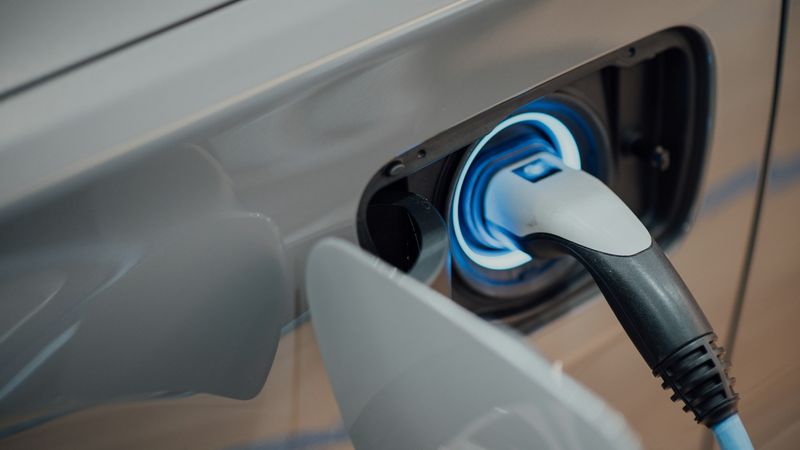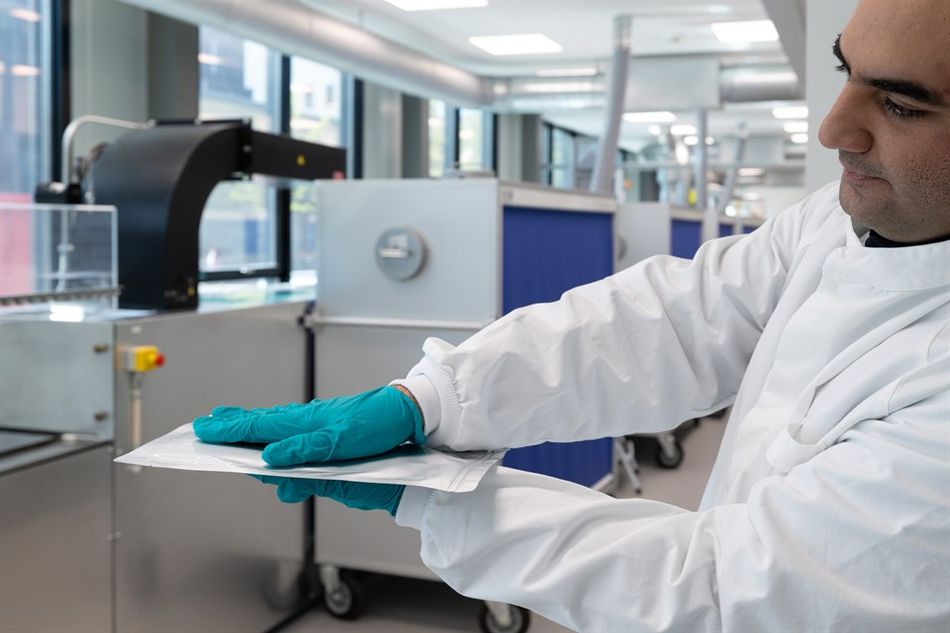Tomorrow's super battery for electric cars is made of rock
In 10 years, solid-state batteries made from rock silicates will be an environmentally friendly, more efficient and safer alternative to the lithium-ion batteries we use today.

Photo by CHUTTERSNAP on Unsplash
This article was first published on
www.dtu.dkIn 10 years, solid-state batteries made from rock silicates will be an environmentally friendly, more efficient and safer alternative to the lithium-ion batteries we use today. Researcher at DTU have patented a new superionic material based on potassium silicate - a mineral that can be extracted from ordinary rocks.
It is the battery in your electric car that determines how far you can drive on one charge and how quickly you can re-charge. However, the lithium-ion battery, the most widely used electric car battery today, has its limitations— in terms of capacity, safety and also availability. Because lithium is an expensive, environmentally harmful material and the scarcity of the relatively rare metal can hinder the green transition of car transport.
As more and more people switch to electric cars, we need to develop a new generation of lithium-free batteries, which are at least as efficient, but more eco-friendly and cheaper to produce. This requires new materials for the battery’s main components; anode, cathode, and electrolyte, as well as developing new battery designs.
It is a research field that is currently occupying researchers all over the world, because when we find new ‘recipes’ for batteries, it will enable a significant reduction of the transport sector’s carbon emissions.
At DTU, researcher Mohamad Khoshkalam has invented a material that has the potential to replace lithium in tomorrow’s super battery: solid-state batteries based on potassium and sodium silicates. These are rock silicates, which are some of the most common minerals in the Earth’s crust. It is found in the stones you pick up on the beach or in your garden. A great advantage of the new material is that it is not sensitive to air and humidity. This makes it possible to mould it into a paper-thin layer inside the battery.
Patented superionic material
The potential of the milky-white, paper-thin material based on potassium silicate is huge. It is an inexpensive, eco-friendly material that can be extracted from silicates, which cover over 90 per cent of the Earth’s surface. The material can conduct ions at around 40 degrees and is not sensitive to moisture.
This will make scaling up and future battery production easier, safer and cheaper, as production can take place in an open atmosphere and at temperatures close to room temperature. The material also works without the addition of expensive and environmentally harmful metals such as cobalt, which is currently used in lithium-ion batteries to boost capacity and service life.
“The potential of potassium silicate as a solid-state electrolyte has been known for a long time, but in my opinion has been ignored due to challenges with the weight and size of the potassium ions. The ions are large and therefore move slower,” says Mohamad Khoshkalam.
To understand the perspectives of Mohamad Khoshkalam’s discovery, one must first understand the crucial role the electrolyte plays in a battery. The electrolyte in a battery can be a liquid or a solid material—a so-called solid-state electrolyte. The electrolyte allows the ions to move between the battery’s anode and cathode, thereby maintaining the electrical current generated during discharging and charging. In other words, the electrolyte is crucial for the battery capacity, charging time, lifespan, and safety.
The electrolyte’s conductivity depends on how fast the ions can move in the electrolyte. The ions in rock silicates generally move slower than the ions in lithium-based liquid electrolytes or solid-state electrolytes, as they are larger and heavier. But Mohamad Khoshkalam has found a recipe for a superionic material of potassium silicate and a process that makes the ions move faster than in lithium-based electrolytes.
“The first measurement with a battery component revealed that the material has a very good conductivity as a solid-state electrolyte. I cannot reveal how I developed the material, as the recipe and the method are now patented,” Mohamad Khoshkalam continues.
The battery everyone is waiting for
Both researchers and electric car manufacturers consider solid-state batteries to be the super battery of the future. Most recently, Toyota has announced that they expect to launch an electric car with a lithium solid-state battery in 2027-28. However, several car manufacturers have previously announced electric cars with solid-state batteries, only to subsequently pull out.
In a solid-state battery, the ions travel through a solid material and not through a liquid, as in the regular AA+ lithium-ion batteries you can buy in the supermarket. There are several advantages to this; the ions can move faster through a solid material, making the battery more efficient and faster to charge.
A single battery cell can be made as thin as a piece of cardboard, where the anode, cathode, and solid-state electrolyte are ultra-thin layers of material. This means that we can make more powerful batteries that take up less space. This offers benefits on the road, as you will be able to drive up to 1,000 km on a single 10-minute charge. In addition, a solid-state battery is more fireproof, as it does not contain combustible liquid.
Before we see the solid-state battery on the market, however, there are several challenges that need to be solved. The technology works well in the laboratory, but is difficult and expensive to scale up. Firstly, materials and battery research is both complex and time-consuming because the materials are super sensitive and require advanced laboratories and equipment. The lithium-ion batteries we use today took over 20 years to develop, and we’re still developing them.
Secondly, we need to develop new ways of producing and sealing the batteries so the ultra-thin material layers in the battery cell do not break and have continuous contact in order to work. In the laboratory, you solve it by pressing the layers of the battery cell together at high pressure, but it is difficult to transfer to a commercial electric car battery, which consists of many battery cells.
Solid-state rock battery is high-risk technology
Unlike lithium solid-state batteries, solid-state batteries based on potassium and sodium silicates have a low TRL (Technology Readiness Level). This means there is still a long way to go from discovery in the lab to getting the technology out into society and making a difference. The earliest we can expect to see them in new electric cars on the market is 10 years from now.
It is also a high-risk technology, where the chance of commercial success is small and the technical challenges are many. Nevertheless, Mohamad Khoshkalam is full of optimism:
“We have shown that we can find a material for a solid-state electrolyte that is cheap, efficient, eco-friendly, and scalable—and that even performs better than solid-state lithium-based electrolytes.”
A year after the discovery in the laboratory at DTU, Mohamad Khoshkalam has obtained a patent for the recipe and is in the process of establishing the start-up K-Ion, which will develop solid-state electrolyte components for battery companies. The K-ion is part of the DTU Earthbound initiative, where they receive support to get their research out of the laboratory faster and into society to make an impact.
The next step for Mohamad Khoshkalam and his team is to develop a demo battery that can show companies and potential investors that the material works. A prototype is expected to be ready within 1-2 years.
The batteries of the future
Now: Lithium-ion batteries in improved versions
It is hard to beat lithium’s ability to conduct ions, but the material is expensive and difficult to obtain. We will see new, improved lithium-ion batteries with a lower concentration of cobalt and lithium.
Within 5 years: Sodium-ion and potassium-ion batteries, as well as lithium solid-state batteries
Sodium and potassium-ion batteries have a high TRL (Technology Readiness Level). Several automakers expect to mass-produce it within 5 years. The development of lithium solid-state batteries is further ahead. We will therefore see them on the market before potassium and sodium solid-state batteries.
Earliest from 10 years: Solid-state batteries of rock silicates
Potassium and sodium solid-state batteries have a low TRL. This means that many steps must be taken before the battery can be commercialized. The technology works in the laboratory, but several technical challenges must be solved before the technology can be scaled up into a functional electric car battery that can be mass-produced.
